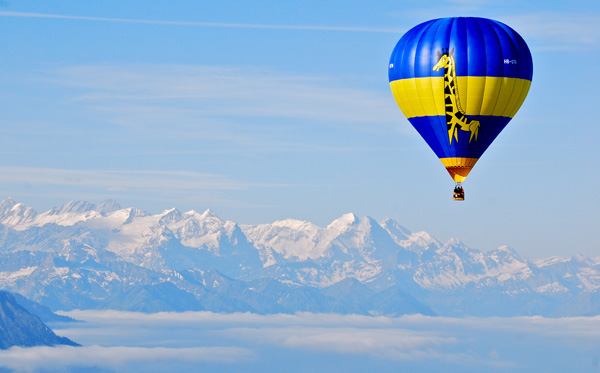What is a gas balloon
The two most often used balloons for flying are hot air balloons also called Montgolfieres and gas balloons aka Charlieres
Hot air: the air inside the balloon is heated by open fire from a burner fed on propane. To go up you warm the air inside the envelope, to go down you let the balloon cool.
Gas balloon: the envelope is filled with a gas lighter than air: nowadays hydrogen is the most common used gas as helium has become very rare and very expensive.
Hot air balloons are the most common aerostat, often seen early in the morning or by late afternoon. Hot air balloons are often used for tourist rides over spectacular sites.
They are rather large starting at a volume of 1800 m3 to 16 000 m3 or more.
As commercial ballooning became popular, the balloons have grown in size in order to carry as many passengers as possible.
Hot air balloons need a lot of propane to be burned to keep the balloon aloft. Because of all this weight to be carried, hot air balloon flights are rather short : An average flight will last about one hour.
Gas balloons flights last much longer, a short flight will last 2 or 3 hours, during the GB race, the competitors can fly as long as 92 hours (actual record). And of course, to keep the balloon in the air, pilots use ballast (usually sand) to throw over board to maintain the balloon at its altitude.
There are 2 types of gas balloons:
- The traditional net balloons: the envelope is enclosed in a net which is connected to the gondola. They were the first gas balloons to fly. The inflating of the balloon takes longer that the modern balloon and needs a lot more people to help getting the balloon ready to fly.
- The modern netless balloon: the envelope is directly connected to the gondola. Needs a lot less people during the inflation process.
Weight and Balast
By the rules of the GB race the balloons are limited in size to 1000m3.
At sea level, air temperature of about 20 °C, a 1000 m3 of hydrogen will lift about 1450 kgs.
The idea is to take as much ballast as possible to stay in the air the as long as possible.
Envelope (about 140 kgs) + gondola + equipment + water + food + 2 pilots = weight
The difference between the lifting mass and the weight will be BALLAST.
This is why envelopes are nowadays much lighter than in the past (the envelope of the French balloon “Grain de folie” weighs less than 100 kgs, in comparison with some old Wartsteiner balloon weighing about 165 kgs)
Gondolas are now made with ultralight material and can weigh as little as 17 kgs….
Pilots are to be as light as possible and very often, champions look like jockeys.
Because of all this, at the launch of the race, the ballast taken by each balloon can vary between 450 to 750 kgs.
And of course, the more ballast you have the longer you will stay in the air.
Equipment on board
To be taken obligatory on board:
- Barometric Altimeter
- Variometer
- VHF air-band radio with 33kHz channel spacing, minimum 5 watt radio plus back up radio
- Strobe light with minimum brightness required for aircraft
- Beam light for night landing
- GPS with activated position and altitude recording function with a maximum logging interval of 5 minutes.
- Life raft or survival suites shall be carried for any anticipated flight over large bodies of water
- Transponder Mode S
- each balloon will be equipped with a Digital 406 MHz S-ELT or EPIRB which should contain an integrated analog (121.5 MHz) homing beacon and be registered with Cospas-Sarsat.
Beside this, all competitors, are taking 1 or 2 computers on board with all aeronautical charts uploaded and the possibility to consult weather charts, and to look up the live tracking of the race!!!
They will have as well a satellite telephone in order to communicate with the Event Director or their team on the ground.




